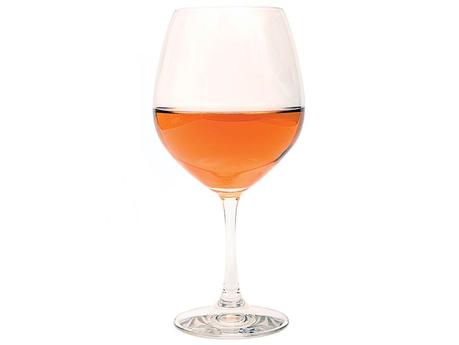Orange Wines are not going to replace Rosés.
By: Louis Marmon
July 31, 2017

Orange wines are essentially white wines created utilizing red winemaking techniques. No citrus is involved. The freshly pressed juice is allowed to remain in prolonged contact with the skins (and sometimes the stems and seeds) for days to months, a traditional form of winemaking that reportedly originated in the area of Georgia (the Country, not the State). As others have noted, it’s much like seeping a tea bag where the intensity of the flavors increases with the amount of time the juice mingles with these other grape cluster components. Most orange wines are aged in barrels or amphorae that allow greater exposure to air. The results are light pink to frankly orange appearing wines with equally wide variations in the amount of astringency, texture and flavors.
Orange wines came to the attention of the western world after a visit to Georgia by an Italian winemaker in the 1990s. He brought home a few of the large “qvervri” earthenware vessels and produced Georgian-style wines from Italian grapes. British wine merchant David Harvey invented the category in 2004 because he felt that “there was no name, let alone category for these wines, which are visually, aromatically and structurally divergent from white wines.”
While this winemaking approach works well for red wine varietals, there are good reasons it never became popular for white wine grapes in areas outside of the Caucasus Mountains. Orange wines sacrifice the fresh fruit associated with white wines in favor of a profile that includes nutty, dried fruit, pine/linseed oil and sour flavors. The astringent tannins, the somewhat harsh and austere style, hints of oxidation and their basic funkiness make them difficult to appreciate. There are those that claim orange wines are more food friendly than whites, especially with fattier foods. But why not just open a more acidic red wine that still displays the fruit of its varietal rather than a strangely bitter wine whose fruit has essentially disappeared?
Wines can be different and odd but still delightful, like Maggie Harrison’s Antica Terra Angelicall Rosé. And while there is a geeky appeal to experimental winemaking and the revitalization of ancient approaches, it’s unrealistic to expect casual wine drinkers to spend their cash on a wine that requires too much thought and experience to enjoy. There is very little chance that orange wines will ever surpass easy-drinking and thus increasingly popular rosés. Orange wines are interesting, but chiefly weird and that doesn’t translate into widespread consumer acceptance.
